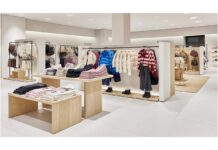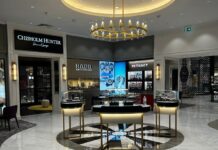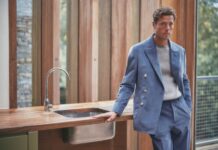Imagine walking into a business venue and being greeted by a larger-than-life sculpture that leaves you in awe. You’re not just seeing an artistic masterpiece; you’re experiencing the company’s brand in a powerful, tangible way. This isn’t just about decorating a space, it’s about creating an environment that resonates with your customers and reflects what your brand stands for. But how do you choose the right sculpture? And what impact can it really have on your business? There’s a fascinating world to explore here.
Understanding Commercial Venue Aesthetics
To fully understand the aesthetics of commercial venues, you need to explore the intricate balance of design elements, where even the smallest detail can dramatically sway the overall ambiance. It’s not just about the grand visual impact; it’s also about subtle details that collectively contribute to the aesthetic experience.
Consider lighting, for example. The importance, color, and directionality all play a substantial role in shaping the venue’s mood. A well-lit sculpture can become a focal point, drawing attention and subtly guiding the viewer’s gaze. Similarly, the choice of materials used in the venue, from the flooring to the wall finishes, can affect how the space is perceived. The tactile sensation of different materials, their visual appeal, and how they interact with light are all critical considerations.
Space organization is another key aspect. The positioning of sculptures, the flow of movement they dictate, and how they interact with other design elements can significantly impact the overall aesthetics. It’s an art in itself, requiring a discerning eye and a deep understanding of spatial relationships.
In essence, aesthetics in commercial venues is a complex blend of various design elements, each playing its part to create a unique and engaging experience.
Role of Sculptures in Branding
Sculptures don’t just serve as aesthetic elements in commercial venues; they can also play a significant role in branding, shaping your business’s identity in the minds of your customers. A strategically chosen and positioned sculpture can embody your brand values, making them tangible and memorable. For instance, a modern, abstract sculpture can reflect innovation and forward-thinking, while a traditional piece can convey a sense of heritage and trustworthiness.
But how does this work in practice? Let’s break it down. When a customer enters your venue and sees a sculpture, their subconscious mind begins to associate your brand with the qualities that sculpture represents. This process, known as associative learning, is a powerful tool in branding. Over time, these associations become stronger and more ingrained, contributing to a robust and distinctive brand identity.
Moreover, sculptures can create a unique ambiance that aligns with your brand’s personality. They can create a talking point, encouraging customers to engage with your brand beyond the transactional level. They can also foster a sense of connection, helping your brand to stand out in a crowded market. Remember, effective branding isn’t just about logos and taglines; it’s about creating experiences and associations that resonate with your customers.
The Art-Business Intersection
Diving deeper into the intersection of art and business, you’ll find that the strategic use of sculptures in commercial venues can profoundly influence consumer behavior and perceptions. Sculptures, being tangible and visually attractive, can create a unique ambiance that elevates customer experience. By introducing art installations in business premises, you’re not just enhancing the aesthetic appeal, but also curating a distinctive brand identity.
In a world where businesses are constantly vying for consumer attention, art can be a powerful differentiator. Imagine visiting a hotel lobby adorned with an exquisite sculpture. Doesn’t it create an immediate impression? That’s the power of art in business—it offers a sensory experience that’s hard to forget.
Moreover, businesses can leverage art to communicate their values, ethos, or even history. A strategically placed sculpture can tell a story, evoke emotions, or generate intrigue, encouraging customer engagement. This integration of art isn’t merely decorative; it’s an effective branding tool, a silent yet impactful communicator. Remember, when art meets business, it’s not just about aesthetics; it’s about creating a lasting impression, fostering connections, and enhancing brand value.
Sculpture Styles and Their Impact
Having established the importance of sculptures in commercial spaces, let’s now explore different sculpture styles and how each impacts the viewer’s perception and experience.
- Abstract sculptures: These provoke thought and curiosity, as they don’t represent objective reality. The viewer’s interpretation and emotional response can greatly vary, thereby making every interaction unique.
- Realistic sculptures: These represent lifelike depictions. They’re easily recognizable, providing a sense of familiarity and comfort. They can also evoke admiration for the sculptor’s skill.
- Kinetic sculptures: These involve movement, capturing attention and creating a dynamic interaction. They can generate interest and encourage the viewer to stay longer.
- Installation sculptures: These are large-scale, immersive pieces. They create a memorable, transformative experience, often becoming landmarks within the venue.
Each style has a unique impact on the viewer’s perception and overall experience. They can influence mood, create visual interest, and even shape the viewer’s association with the brand. By understanding these impacts, you can better choose the right sculpture style that aligns with your brand’s message and the experience you want to provide. Remember, every sculpture isn’t just a piece of art—it’s a strategic tool for enhancing aesthetics and branding.
Artistic Elements Shaping Customer Perception
Now, let’s explore the artistic elements of sculptures and how they shape your customers’ perception of your venue. The choice of material, style, and size of a sculpture can greatly influence how customers perceive your brand.
Materials hold symbolic meaning. For instance, bronze sculptures often represent permanence and strength, potentially aligning with a brand image of longevity and reliability. On the other hand, glass or acrylic sculptures might suggest innovation and modernity.
The style of the sculpture also plays an important role. Abstract designs can stimulate curiosity and discussion, while more classical forms might evoke a sense of tradition and stability. Larger sculptures could make a bold statement, commanding attention and possibly creating a memorable, dramatic impression. Conversely, smaller sculptures could subtly enhance the aesthetics of a space, contributing to an overall refined ambiance.
In essence, the artistic elements of sculptures aren’t just decorative; they’re strategic tools that can be used to convey your brand’s story and values. This tactic can foster a deeper connection with your customers and influence their perception of your brand, ultimately impacting their buying decisions and loyalty.
Case Study: Sculptures in Luxury Retail
To illustrate the power of sculptures in shaping customer perception, let’s examine the case of luxury retail venues, which often employ art as an integral part of their branding strategy. This combination of commerce and culture elevates the shopping experience, enticing high-end clientele through the doors and compelling them to stay longer.
Imagine walking into such a venue and being greeted by the following:
- An imposing bronze piece, teeming with symbolism of the brand’s heritage, situated in the central atrium, instantly catching your eye.
- A kinetic sculpture, its movement echoing the dynamic nature of fashion, displayed in the women’s section.
- A sleek, modern sculpture, embodying the brand’s commitment to innovation, strategically placed in the men’s department.
- A playful, abstract piece, reflecting the brand’s whimsical side, positioned in the accessories area.
These strategically placed sculptures aren’t merely decorative; they create a narrative, reflecting the brand’s identity and values. The synergy of art and retail in these spaces transforms the mundane act of shopping into an immersive, cultural experience. It’s a potent illustration of how sculptures can enhance aesthetics while reinforcing brand image in the commercial sphere.
How Sculptures Enhance Business Environment
To begin with, sculptures’ impact in the wider business environment is a demonstration of their power as visual storytellers, transforming sterile office spaces into vibrant, creative hubs. Imagine walking into an office that’s not just a maze of cubicles and desks, but a dynamic space energized by art.
The presence of sculptures can indeed enhance your business environment in several ways. To start, they inject life and character into otherwise mundane spaces, giving employees a more stimulating atmosphere. This can boost morale, foster creativity, and improve productivity.
Additionally, sculptures can subtly communicate your brand’s ethos. For instance, a sleek, modern sculpture might suggest innovation and forward-thinking, while a traditional piece could convey solidity and heritage. This silent yet powerful messaging can influence both your employees’ perception of the company and how visitors, including potential clients or partners, view your brand.
Lastly, sculptures can also function as directional landmarks within larger premises, aiding navigation.
In essence, introducing sculptures into your business environment isn’t just an aesthetic choice, it’s a strategic one that can deliver multiple benefits. So, don’t overlook the potential of sculptures to enhance your workspace and enrich your brand’s narrative.
Sculptures as Conversation Starters
In the world of business, sculptures serve not only as aesthetic additions but also as great conversation starters, sparking thoughtful discussions and fostering connections among employees, clients, and visitors. They’re not just art pieces; they’re tools for engagement.
Imagine walking into a venue and being greeted by a mesmerizing sculpture. It’s hard not to have an opinion or feel some sort of emotion. This instant reaction can kickstart conversations, break the ice, and stimulate intellectual engagements.
Consider these scenarios:
- A sleek, modern sculpture in the lobby of a tech company sparks a discussion about innovation and futurism.
- An abstract piece in a cafe invites customers to share their interpretations, fostering a sense of community.
- A historical sculpture in a law firm may provoke debates about justice and societal changes.
- A colorful, whimsical sculpture in a creative agency could encourage brainstorming and the sharing of bold, new ideas.
Sculptures aren’t just decorative; they’re functional. They’re conversation pieces that can stimulate dialogue, promote intellectual curiosity, and create a dynamic and engaging environment. So, next time you’re considering enhancing your venue, think sculpture. It’s more than art; it’s a conversation starter.
The Psychology Behind Art in Commerce
Delving into the psychology of art in commerce reveals that it’s not just about aesthetics; strategically chosen sculptures can greatly influence customer behavior and perceptions of your brand. The right artwork can subtly steer emotions and decisions, enhancing the overall customer experience.
Consider how sculptures can induce a sense of calm or excitement, influencing the time customers spend in your venue. A tranquil piece may encourage leisurely browsing, while a vibrant, dynamic sculpture might inspire quick decision-making. This emotional response isn’t just incidental; it’s a deliberate effect that can be manipulated to drive customer behavior.
Art also plays an important role in shaping perceptions of your brand. A high-end sculpture signifies quality and sophistication, positioning your brand as a premium choice. Alternatively, a quirky, offbeat piece can suggest innovation and creativity, distinguishing your brand as a unique disruptor.
The psychological impact of art isn’t solely about influencing customers. Employees, too, respond to the atmosphere created by artwork. A positive, inspiring environment can increase productivity and job satisfaction. Therefore, the psychological effects of art in commerce are multi-faceted, impacting both your customers and your team.
Creating a Unique Brand Identity With Art
While the psychological influence of art has profound effects on customer behavior and employee morale, it’s also a powerful tool in the creation of a unique brand identity. By integrating sculptures into your commercial venue, you’re making a statement about your brand’s values, aesthetic preferences, and overall vision.
Art can be used to create a distinct brand personality in several ways:
- It sets the tone: A modern, abstract sculpture might convey a forward-thinking and innovative brand, while a classic, realistic piece might suggest tradition and reliability.
- It reinforces the brand story: Art can be a visual representation of your brand’s history, mission, or values.
- It creates an immersive experience: Art transforms the physical space of a venue into an embodiment of your brand, making it more engaging and memorable for customers.
- It sparks conversations: Unique art pieces can attract attention and get people talking about your brand, both in person and on social media.
Selecting the Right Sculpture for Your Venue
Choosing the right sculpture for your venue isn’t just about aesthetics; it’s a strategic decision that should align with your brand image and resonate with your target audience. It’s essential to look beyond the visual appeal and consider factors such as the size, material, and artist’s reputation.
Size matters. A sculpture that’s too large can overwhelm your space, while something too small might go unnoticed. Pick a sculpture that complements your venue’s size and layout.
The material is equally important. Durability and longevity are key considerations, especially for outdoor installations. Bronze, stone, and stainless steel are popular choices due to their resilience.
The artist’s reputation can impact your brand. Selecting a sculpture from a renowned artist can increase your venue’s prestige and attract art-loving clientele. However, choosing an emerging, lesser-known artist can signal your commitment to supporting new talent.
Lastly, the sculpture should embody your brand’s values and message. A tech company might opt for modern, abstract pieces, while a historical venue may prefer classical, realistic sculptures. Remember, the right sculpture won’t just beautify your venue; it will enhance your brand and engage your audience.
Maintenance and Care for Commercial Sculptures
Once you’ve selected the perfect sculpture for your venue, it’s essential to understand the importance of regular maintenance and care to preserve its aesthetic appeal and longevity. This isn’t simply for visual pleasure; it’s an integral part of your brand’s image and customer perception.
Consider the following aspects when planning your maintenance schedule:
- Regular Cleaning: Dust and pollutants can dull the sculpture’s surface over time. Regular cleaning using appropriate methods is vital to maintaining its vibrancy.
- Inspection for Damage: Regularly check for any signs of damage or wear. Early detection allows for timely repairs, preventing further deterioration.
- Proper Lighting: Ensure the sculpture is adequately lit. This not only enhances its appearance but also helps to spot any potential issues.
- Professional Maintenance: Hiring a professional conservator for periodic inspections and maintenance can be invaluable, particularly for high-value or delicate pieces.
Maintenance and care for your commercial sculptures require a strategic approach. It’s not just about preserving the art; it’s about preserving your brand’s image and the message you convey through your chosen aesthetic. By prioritizing this, you’re ensuring that your investment continues to add value to your venue and brand for years to come.
ROI: Investing in Sculptures for Business
Beyond the aesthetic appeal, theming solutions in UAE and brand image, the real value of incorporating sculptures in your commercial venue comes into play when you consider the return on investment (ROI). It’s not just about having a work of art; it’s about what that art does for your business.
Think of it this way – a well-chosen sculpture can be a significant statement of your brand’s personality and ethos. It can create a welcoming environment, spark conversation, and even inspire loyalty among your customers. Over time, these factors can translate into increased foot traffic, longer customer visits, higher sales, and ultimately, a positive ROI.
Moreover, a sculpture’s value doesn’t depreciate like some other business assets. In fact, it may appreciate over time, enhancing your venue’s investment potential. However, it’s essential to note that ROI isn’t just about monetary gain. Sculptures also offer intangible returns such as enriched customer experience and improved brand perception.
Conclusion
Investing in sculptures can dramatically enhance your commercial venue’s aesthetics and brand identity. Did you know a survey by the Business Committee for the Arts found that 82% of businesses felt arts boosted employee engagement?
So, selecting the right sculpture not only captivates customers but also motivates staff. Remember, maintaining your art pieces is important to retain their value.
In the end, well-chosen, well-placed sculptures can offer a significant return on investment, both aesthetically and commercially.
Photo Source: https://i.postimg.cc/J7xbtB4v/The-Impact-of-Sculptures-in-Commercial-Venues-Enhancing-Aesthetics-and-Branding.png

















